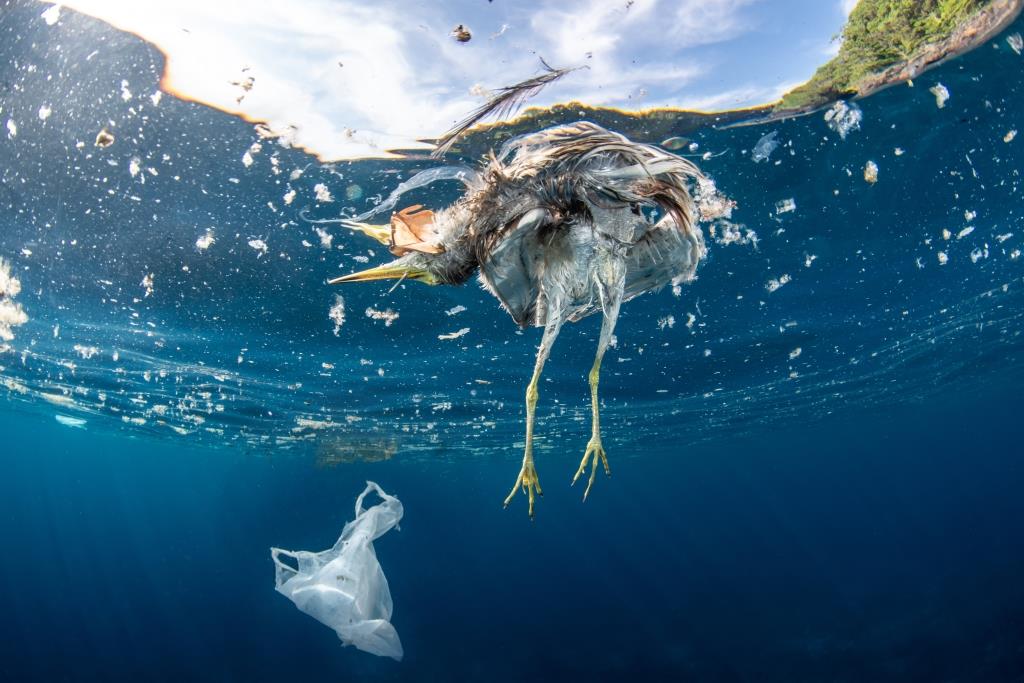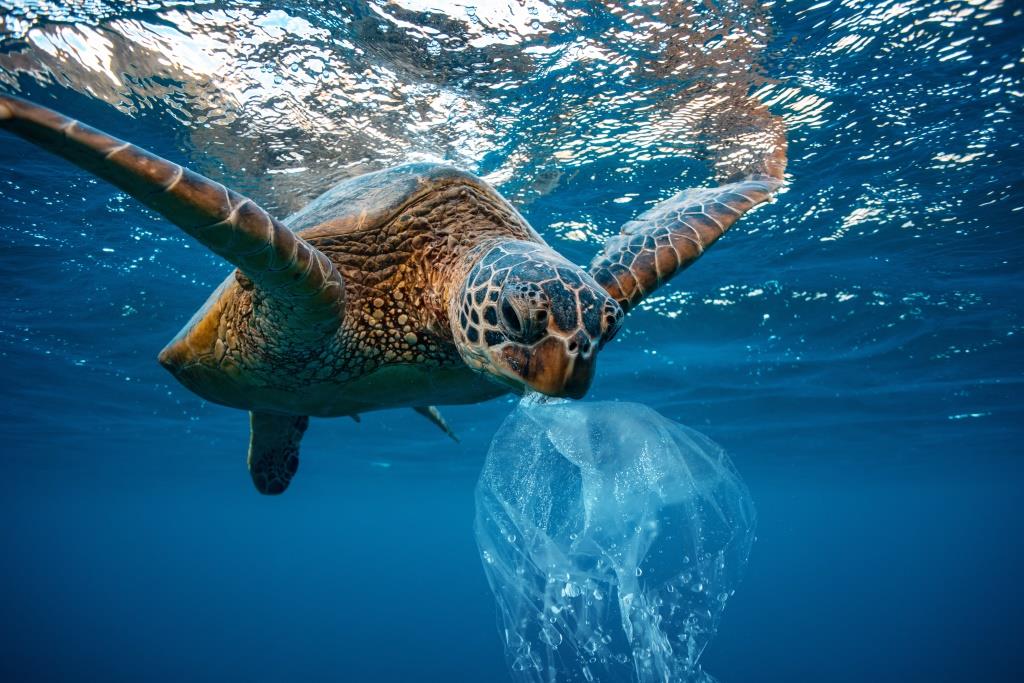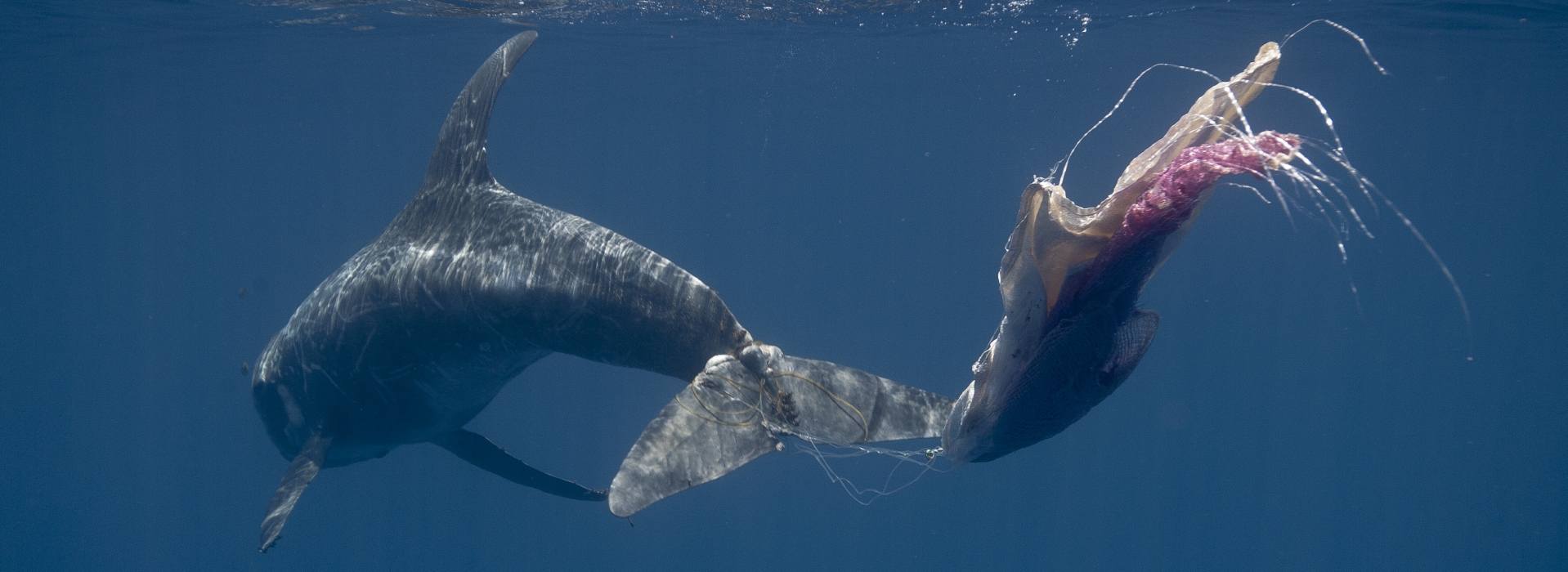
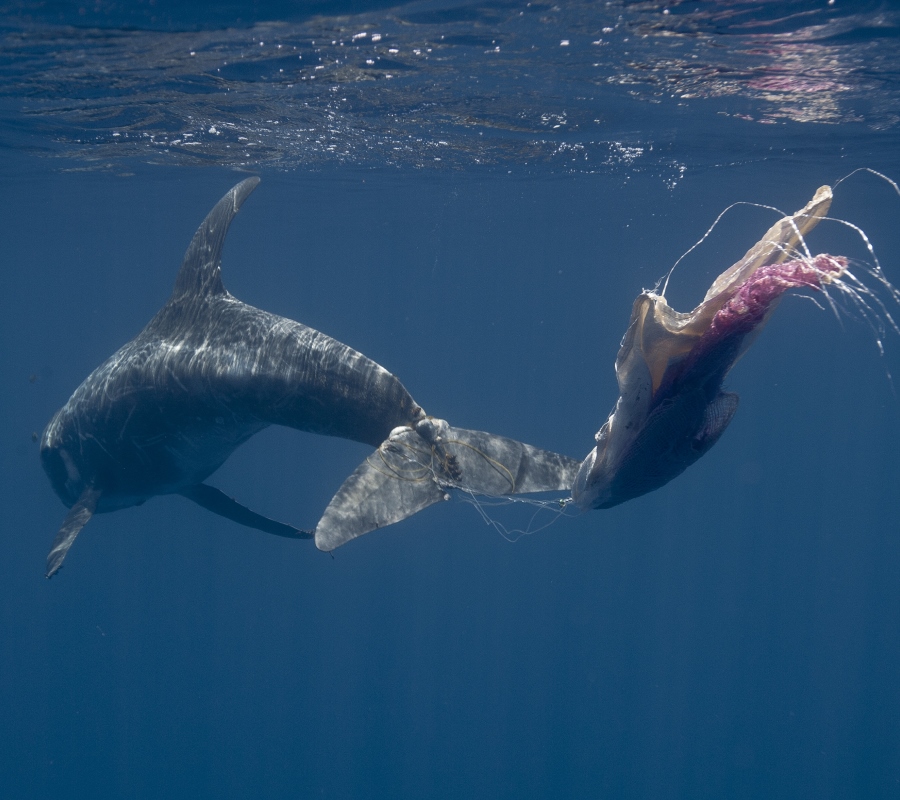
Plastic at sea: a threat to animals and the environment
It is estimated that around 150 million tons of plastic are currently floating in the world’s oceans, with up to 9 – 14 million tons being added annually and with disastrous consequences for the marine ecosystem.
Properties of plastic
Most types of plastic are made from crude oil or gas in a chemical process. Plastics can be used in a variety of areas and are extremely durable due to their robustness, with precisely this feature making them an acute environmental problem. Since plastic can endure in the environment for several hundred years, science assumes that every plastic product that has ever found its way into nature can still be found there. Especially with disposable plastics, which fulfil their product purpose within a few hours – often even a few seconds – the potential damage to the marine ecosystem is more than disproportionate. As much as 40% of the plastic produced in Europe is used for disposable products such as packaging.
Consequences of marine plastic pollution
According to the current state of research, more than 800 marine species worldwide are affected by the plastic waste problem. Animals mistake the plastic parts floating in the sea for food and swallow them. This can lead to internal injuries or death by starvation. Lost or improperly disposed fishing tackle, such as nets or lines are deadly traps, especially for whales, dolphins, seals and sea turtles when these animals become entangled in them.
Not to be underestimated are the invisible consequences of the plastic flood. To some types of plastic harmful additives such as plasticizers (phthalates) are added during manufacturing. In addition, plastic particles absorb environmental toxins such as polychlorinated biphenyls (PCBs), which have been banned because of their harmful effect but are still detectable in the oceans. These pollutants accumulate on the surface of plastics and transform them into deadly poisonous cocktails. Once they land in the digestive tract of marine animals, the toxic substances can accumulate in their tissue.
Distribution in the oceans
It is known now that plastic pollution has reached even the most remote marine regions, such as the Arctic: During studies in 2014 and 2015, it was found that there are more than 12,000 micro plastic particles (plastic particles less than 5 millimeters in size), per one liter of sea ice. Plastic even reaches the depths of the oceans. Researchers assume that the deep sea serves as a landfill for anthropogenic plastic waste. For example, countless amounts of plastic waste have been found in the Mediterranean at a depth of more than 2,000 meters and micro plastics have been detected in various organisms living thousands of meters deep in the Atlantic and Pacific.
Only 6% of the plastic in the oceans floats on the water surface or is washed up on beaches. The large remainder sinks to the seabed, where the long-term consequences for the organisms living there can hardly be estimated.
Microplastic
Pollution of the oceans by plastic/plastic polymer types is not only contributed by riparian states, but also by landlocked countries such as Switzerland. Microplastics, microrubber and persistent dissolved polymers are carried into the oceans via rivers. The latest studies are alarming: every year, 1.5 million tonnes of microplastics enter the oceans via wastewater and rivers. With fatal consequences for their inhabitants. Marine animals become sick, poisoned or starve to death because of the microplastic. The plastic particles are so small that many of them pass through sewage treatment plants. Also in Switzerland: the Rhone and the Rhine, which both flow into the sea, are heavily polluted with microplastic.
Everyone can make a contribution to curbing this invisible water pollution. KYMA’s Stop Microplastics – Save Marine Animals campaign provides information on the background to microplastic pollution in Switzerland and calls on the Federal Council and Parliament to enact the necessary measures to reduce the nationwide input of microplastics into our waters and the oceans to an absolute minimum.
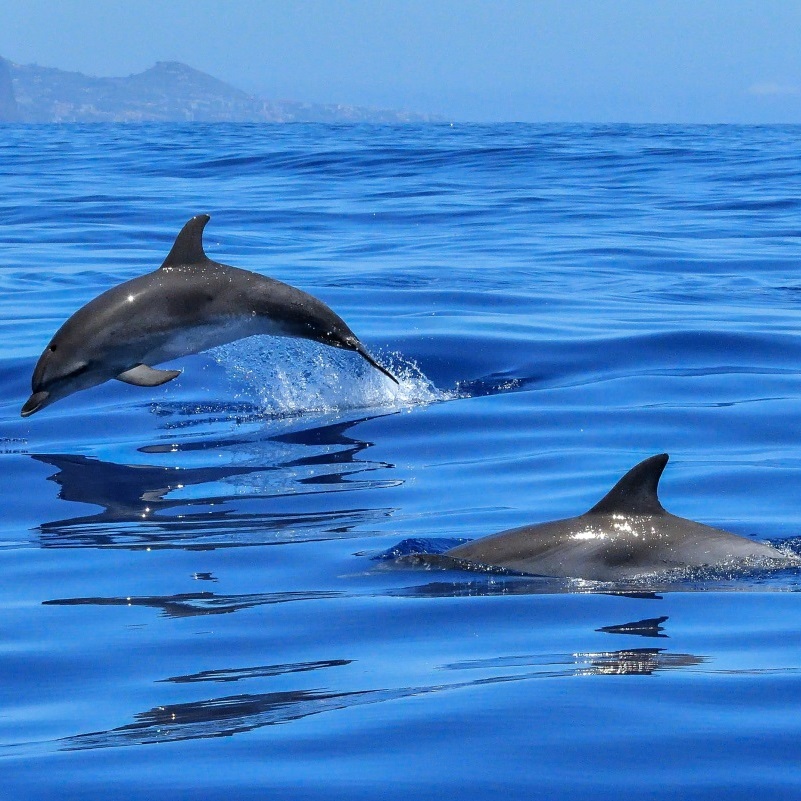
Donate for clean seas
Donate for clean seas

Worth knowing: plastic classification according to size
Megaplastics
Plastic parts with a size of more than 100mm, such as fishing tackle and transport packaging like shrink wrap.
Macroplastics
Plastic parts with a size of over 25mm, such as disposable cups, food packaging.
Mesoplastics
Plastic parts with a size of 5 to 25mm, such as fragments, bottle caps.
Microplastics
Plastic parts with a size of 0.0001 to 5mm. Primary microplastics include e.g. pellets, textile fibers, tire abrasions, microbeads in cosmetics. Secondary microplastics are created by the decomposition of larger plastic parts.
Nanoplastics
Plastic parts with a size less than 0.0001mm Primary nanoplastics include e.g. particles in electronics, biomedical products or paints / varnishes. Secondary nanoplastics are created by the decomposition of larger plastic parts.
Worth knowing: plastic classification according to size
Megaplastics
Plastic parts with a size of more than 100mm, such as fishing tackle and transport packaging like shrink wrap.
Macroplastics
Plastic parts with a size of over 25mm, such as disposable cups, food packaging.
Mesoplastics
Plastic parts with a size of 5 to 25mm, such as fragments, bottle caps.
Microplastics
Plastic parts with a size of 0.0001 to 5mm. Primary microplastics include e.g. pellets, textile fibers, tire abrasions, microbeads in cosmetics. Secondary microplastics are created by the decomposition of larger plastic parts.
Nanoplastics
Plastic parts with a size less than 0.0001mm Primary nanoplastics include e.g. particles in electronics, biomedical products or paints / varnishes. Secondary nanoplastics are created by the decomposition of larger plastic parts.
